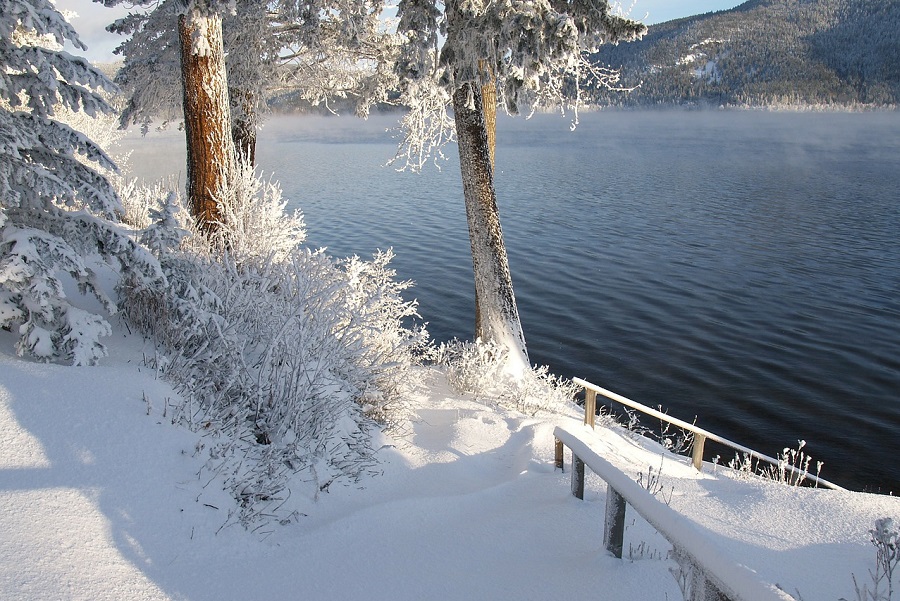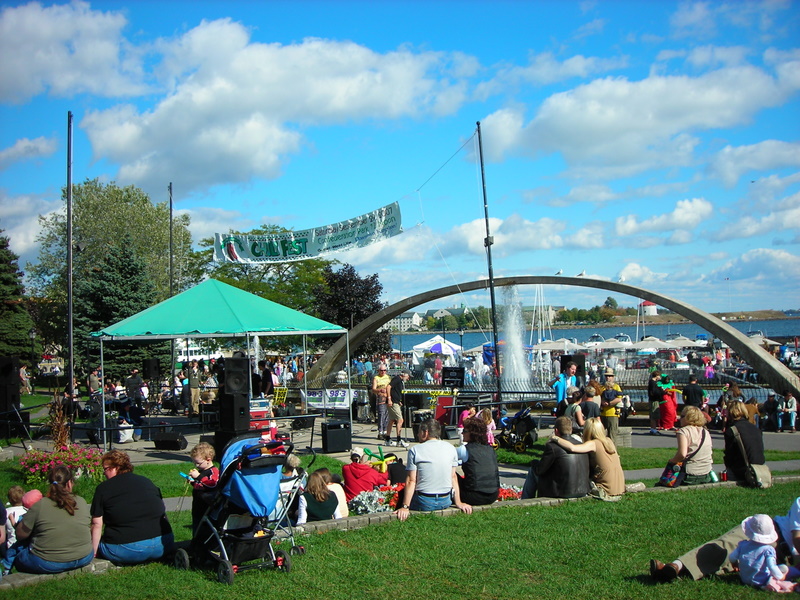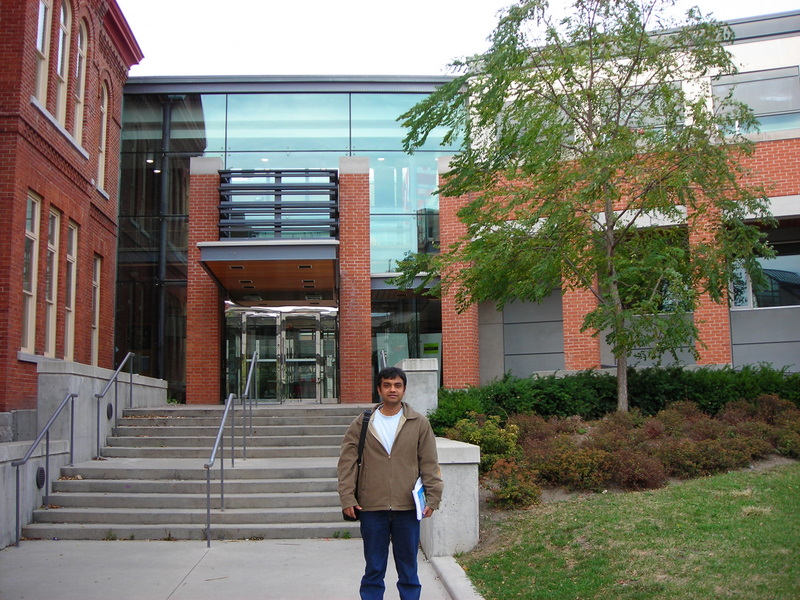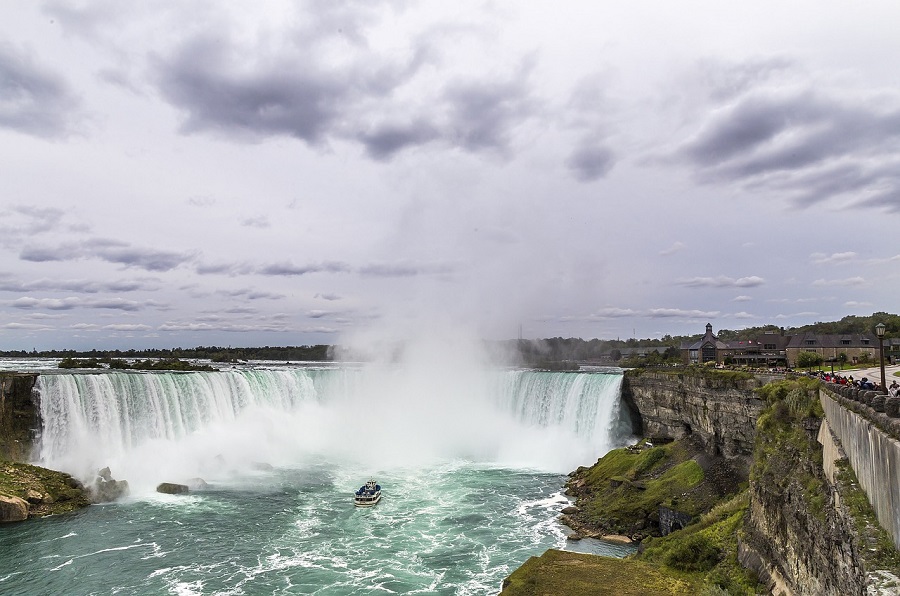
From the Tropic to the Arctic: My Year in Canada

Sharmistha spent a year in Canada with her husband Sameer who was taking an MBA at Queen’s University
When my husband and I received the visa for Canada in March 2007, our first thought was- “Yay! No Indian summer this year for us”. Sameer, my husband, had been wanting to re-tool himself with a second MBA. The program at Queen’s University, Ontario, Canada had caught his attention for multiple reasons- most importantly- it was for one year. So it would mean taking a break from working, and earning for only a year. The program had a high ranking and the batch size was reasonably small, which increased the chances of placement of students. For these reasons, when he received an offer from Queens program, he was happy to accept. I was happy to accompany him there as I had always wanted to experience living abroad- I had travelled in Europe but this would be my first foray in North America.
So it was that we found ourselves entering Toronto in April. From Toronto airport, we took a bus to Kingston. It was, for us, shockingly cold, even though it was the end of winter. I couldn’t help noticing how the trees were all bare, without a single leaf on them. Coming from sunny India, this sight was very depressing. We were jetlagged and slept through most of our journey to Kingston, but as we entered the town around midnight, we woke up in excitement. We were extremely surprised to see so many of the town’s buildings lit up very brightly at this late hour. Clearly, paucity of electricity was not a problem here!
This was the first sign of an affluent society, which has an abundance of resources. Many other signs revealed themselves to us in the year that we stayed there- uninterrupted water and electricity, cleanliness everywhere, wonderful air quality, free access to libraries. It was all very impressive. So was the Queens university campus which was, to put it simply, grand. Beautiful Victorian style architecture, oodles of space and greenery, stellar amenities for students- I had never seen anything comparable to this in India.

Downtown Waterfront Kingston
We settled into the campus life and after staying in a couple of hotels during our first month, which burned an enormous hole in our pockets, we found accomodation in university housing which was located off the campus. While the exterior was unprepossessing, the individual units inside were very well maintained, bright, airy and were very comfortable for the two of us. Sameer was happy that the crowd in his program was very multicultural- while there were many students from India, there were also many Canadians- some Caucasian and some of Chinese origins. So there was the comfort of the known- as well as the learning from the unknown. He found the lectures stimulating and challenging and the faculty competent and good at engaging students. The program curriculum was updated and relevant to the business scenario.
I wanted to experience the educational system myself, so I wrote to many professors in the Development Studies department, describing my work experience and offering my skills, and requesting for meetings. Some didn’t reply, some replied to say they couldn’t help but I secured two meetings. And one of these fructified into an offer for a teaching assistantship for a course called ‘AIDS, power and poverty’. I had been working on HIV in India just before moving to Canada so it was a very good fit for me. The course was for freshmen and was taught by a Professor of History who was interested in the HIV problem. As part of my duties, I would be required to attend all the classes, conduct tutorials for students (sometimes upto three times in a week), grade the students’ assignments and exams and do anything else the professor saw fit. I was excited and nervous at the same time. Luckily for me, I met the other teaching assistant, Mary, who was also an international student who had been here for a year already, and she gave me a lot of useful tips about how to conduct tutorials and what to expect in them. This went a long way in alleviating my anxiety.
The class size was a bit of surprise to me when I walked in to the first class- almost 80 students were present. At my undergraduate school, though the class strength was numerically high- maybe 60 stduents in the class- the majority didn’t turn up for class as attendance was not mandatory, so the classes appeared very small, with only a handful attending. Here, clearly students valued the education and showed up for every class. They were paying through their nose for it, so naturally they did. In India, in most colleges at the undergraduate level, the fees are very low, and so is the quality of the education that is dispensed.

Sameer on campus
There were many things I loved about the course. It was designed very well- it covered a lot of issues that were real and present on the ground, in an interesting manner, using a variety of techniques. Prof Marc had designed it himself and therefore he delivered it brilliantly. I found it amazing that the university gave so much freedom to its teachers- that a professor of history was encouraged to develop his interest into a serious public health problem into a full fledged course. The fact that the professor was an outsider to public health and epidemiology, helped him to see the issues from a different perspective and bring fresh insights to the topic.
The thing I loved the most about my job was that the students were exceedingly polite and well-behaved. Ofcourse, this was a Canadian cultural thing- people everywhere, in the streets, public places, inside homes are so very polite and nice. For me this was particularly pleasing because I had taught to undergraduates in India and they were far more rumbunctious, fractious and demanding. This lot was like angels in comparison.
The huge class size did not allow for a great deal of student-teacher interaction or discussion. This to my mind was the only flaw in the course. To address this, tutorials were held in smaller groups of fifteen. At these tutorials, students had the opportunity to clarify their doubts and discuss the topics in greater detail, among themselves, under the supervision of the TA. Through these weekly tutorials, I came to know the students well and to understand, to some extent, their world view. It is true that many of them did not know much about countries other than their own. But they were open to learning. I did what I could to enhance their understanding of the subject matter of HIV, telling them about my practical experiences from the field, and also to make them understand about the so-called ‘developing’ countries- especially India.
I made friends with the wives of some of the students of the MBA program. Interestingly, it was the co-ordinator of the program, who invited all the wives to meet her and thereby created an opportunity for them to interact with and get to know one another. This was an outstanding example of thoughfulness on the part of the institution as the wives also needed a support system outside of their husbands. This group of friends, which again was a multi-cultural group, consisting of three Canadians, one Peruvian and one Australian lady, apart from me, was the mainstay of my social life in Canada. As summer progressed, we had many outings to explore the town of Kingston at the parades and the street festivals with which Canadians celebrate the sunshine.
Through my interactions with these ladies, the students and other people I met on the campus, I came to appreciate various facets of Canadian society. Apart from their thoughtfulness and courtesy, I appreciated how liberal the society was. People used the word ‘partner’ rather than ‘spouse’. Live-in partners were recognized and given all the benefits that spouses enjoyed. The university often made clear, in writing, that sexual orientation was not a bar for anything and that discrimination on grounds of sexual orientation or race would not be tolerated. I myself did not experience any racism in the time I spent there. Once, when one such unsavory event occurred in the campus, it was widely discussed in the classrooms (while protecting the identities of both the parties involved) and students were encouraged to introspect and discuss what led to such events happening and what could be done to prevent them. I was also very impressed by the extent to which sport was an integral part of lives of the citizens. Most people played one or two. In fact, I was totally embarassed to admit, on being, asked, that I played none. And I absolutely loved the Internet speed. It was super fast.
I developed a fondness for the Canadian food- the pizzas and burgers were much tastier than the ones you get in India. I tasted the national dish- poutine- and loved it- it was a gooey mess of french fries, cheese curds (which I had never had before) and meat. There were many Asian and Indian restaurants in Kingston, although the food at the Indian restaurants was toned down to suit the western palate, and therefore rendered tasteless to us Indians.
We travelled a bit- Sameer went to see the majestic Niagra falls with his classmates. We took a cruise of the Thousand Islands. We went to the capital Ottawa and visited the beautiful parliament building. We made a trip to Montreal in the autumn to see the lovely fall colors. Fall is the loveliest season in Canada. There is a nip in the air but it is pleasant and the trees seem to burst into flames. Through these excursions, we were able to appreciate the stunning natural beauty of Canada.

Niagara Falls
I missed my family a lot. Fortunately I could speak to them every week on phone through some cheap phone plans. I also missed being able to step out for a movie or a play. While there were some movie theatres in Kingston, they invariably showed only the English language films and we had to catch Indian films on the Internet. Similarly for stage and theatre. I am happy to watch content from other cultures but not when the content is exclusively western. So this was a lack for me. Later as the summer waned and winter came, I missed the sunshine and the heat.
The Canadian winter, especially in the eastern coast, where we were located, can be pretty severe, especially to those who are unaccustomed to winters. The first snow filled us with excitement at its beauty and novelty, but soon the lack of sunshine and color started taking a toll on me. It was unnerving for me to have the darkness descend at four’o clock in the afternoon and to see everything covered under a white blanket of snow, bleached of any colour whatsoever. No wonder, seasonal affective disorder, or SAD, as it is known, is a common ailment in this country. I was advised by the Canadians to not hunker down inside my home but to go out and brave the cold and to enjoy the winter- to go skating on the ice rinks, to go tobogganing, to build a snow man, to eat the maple syrup candy- to beat the winter blues. Maple syrup candy was a lovely thing- maple syrup is boiled and poured into some clean snow while it is boiling hot- upon which is solidifies into a soft chewy candy which can be rolled up on an ice-cream stick. It tastes very good. While the advice was sound, it was difficult for me to follow as I felt the extremely uncomfortable stepping outside in the below freezing temperatures. Even grocery shopping became such a tedious chore for me.
While the winter raged around us, it became apparent that gloom was also spreading through the global economy. It became clear in the winter of 2007, that the global economy, especially the western markets were headed for a major slump. Sameer and I discussed what the future held. Though we had come with the intention of working in Canada for some years after he finished his program, it was now obvious that there were hardly any jobs to be had. With heavy hearts, we decided to return to India when the program was finished.
We felt sad when the time came to leave our cosy little apartment, the gorgeous campus, the beautiful town of Kingston, with its sparkling great lake Ontario. We had made many friends and had experienced a way of life that was gentler, slower and easier than our Indian ways. It had enriched us in certain ways and we look back at our year in Canada with great fondness, especially during the Indian summer months!
